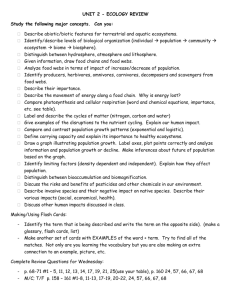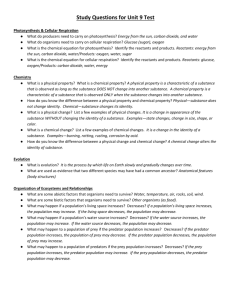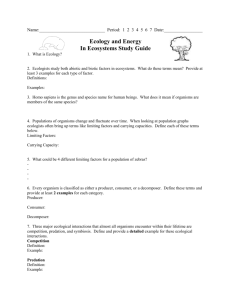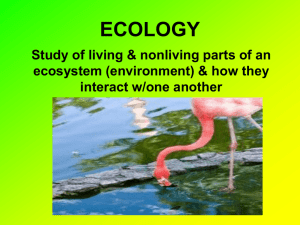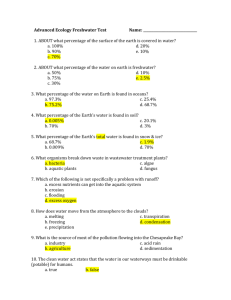FA3 work sheet - Buds Public School
advertisement
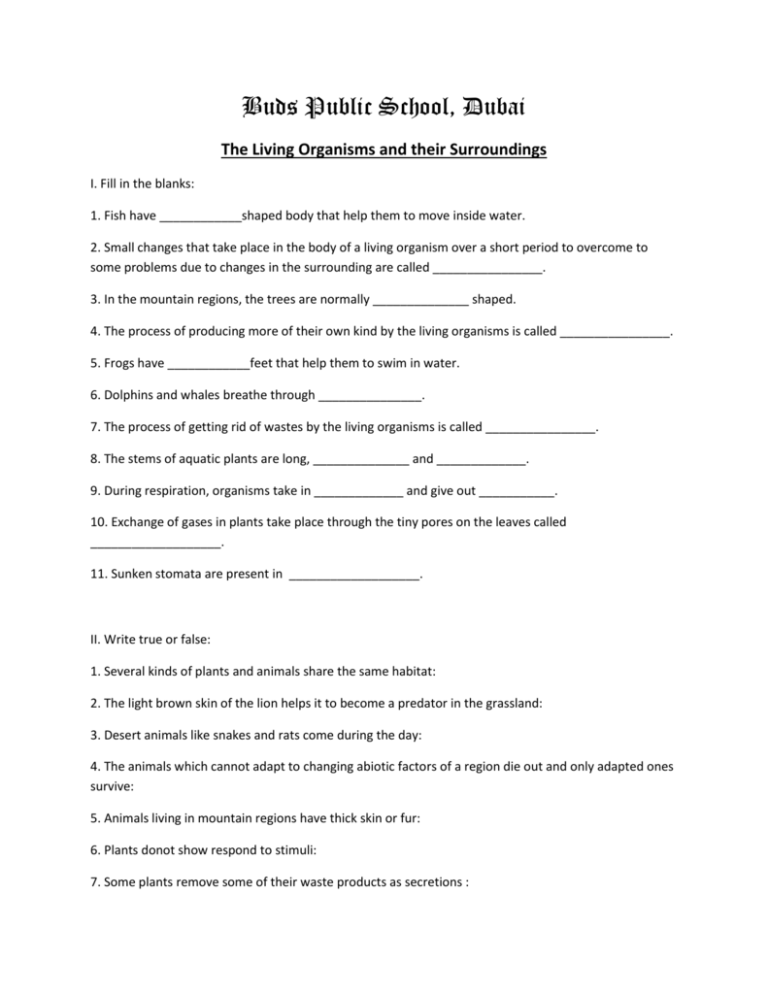
Buds Public School, Dubai The Living Organisms and their Surroundings I. Fill in the blanks: 1. Fish have ____________shaped body that help them to move inside water. 2. Small changes that take place in the body of a living organism over a short period to overcome to some problems due to changes in the surrounding are called ________________. 3. In the mountain regions, the trees are normally ______________ shaped. 4. The process of producing more of their own kind by the living organisms is called ________________. 5. Frogs have ____________feet that help them to swim in water. 6. Dolphins and whales breathe through _______________. 7. The process of getting rid of wastes by the living organisms is called ________________. 8. The stems of aquatic plants are long, ______________ and _____________. 9. During respiration, organisms take in _____________ and give out ___________. 10. Exchange of gases in plants take place through the tiny pores on the leaves called ___________________. 11. Sunken stomata are present in ___________________. II. Write true or false: 1. Several kinds of plants and animals share the same habitat: 2. The light brown skin of the lion helps it to become a predator in the grassland: 3. Desert animals like snakes and rats come during the day: 4. The animals which cannot adapt to changing abiotic factors of a region die out and only adapted ones survive: 5. Animals living in mountain regions have thick skin or fur: 6. Plants donot show respond to stimuli: 7. Some plants remove some of their waste products as secretions : 8. Camels excrete large amount of urine and their dung is wet: 9. Plants carry out photosynthesis only during the daytime and respiration only at night: III. Name the following: 1.Two terrrestial habitats. 2. Two aquatic habitats. 3. Two plants and two animals of mountain regions 4. Four important abiotic factors needed for growth of plants 5. Breathing organs of fish and earthworms. 6.Any three modes of reproduction by plants. IV. Define the following: i. Adaptation ii. Stimuli V. Distinguish between: i. Biotic and abiotic factors. ii. Terrestrial organisms and aquatic organisms. VI. Draw, colour and label: 1) a desert plant. 2) an aquatic plant VII. Fill in the blanks : 1. Organisms in oceans are surrounded by _______________ water. 2. Gills help fishes to use ______________ dissolved in water. 3. Plants and animals living on land belong to ______________ habitat. 4. Photosynthesis in desert plants is carried out by the _______________. 5. Exchange of gases in plants takes place through ________________. 6. In mountain regions trees are normally ______________ shaped and have ______________ branches. 7. Changes in our surroundings that make us respond are called _______________. 8. Animals like rats and snake live in ______________ during day to stay away from heat. 9. Breathing is a part of the process of ______________. 10. ________________ protect the fishes and help in easy movement through water. VIII. Write True or False : 1. Animals and plants are abiotic factors. 2. Dolphins and whales do not have gills. 3. Skin of fishes is covered with scales. 4. Leaf like structure in cactus is its stem. 5. Yak is adapted to mountain habitat. IX. Give answer in one or two words : 1. Give 2 examples of aquatic habitat. 2. Give 2 examples of terrestrial habitat. 3. Give 2 examples of aquatic plants. 4. Name two animals found on mountains. 5. List common characteristics of living things(2 marks) 6. How do desert plants conserve water in their body? (2 marks) 7. How do plants fulfill their nitrogen requirements? (2 marks) 8. What is adaptation? How does it differ from acclimatisation? (2 marks) Air around Us Fill in the blanks :1. Air occupies _________________________. 2. Harmful gases and smoke in the air causes _________________________. 3. The _______________________ and ______________________ within the nasal passage prevents entry of dust particles into our respiratory system. 4. Air helps in _________________________ of sound. 5. Nitrogen present in the air is used for making _________________________. 6. Most abundant gas present in atmosphere is_________________________. Choose the correct answer :1. The height of the atmosphere is (120 km/240km) 2. The volume of oxygen (increases/decreases) with increase in altitudes. 3. (Carbondioxide/Oxygen) is taken in by the plants for photosynthesis. 4. Air contain approximately (78 percent/80 percent) of Nitrogen. Name the following :1. The two scientists who proved air is a mixture of gases : 2. The lightest gas in the air. 3. The gas essential for combustion and respiration. 4. The substance in presence of which photosynthesis takes place : Define the following :(a) Atmosphere (b) Respiration (C) State the importance of air dissolved in water. I. Fill in the blanks : 1. Air is really not one substance but a __________________. 2. The component of air that supports burning is called ________________. 3. The aquatic animals use dissolved Oxygen in water for respiration, this is possible because Oxygen ________________ in water. 4. Nitrogen of the air is used on a large scale to manufacture ________________. 5. ________________ is the place in nature for gaseous exchange. II. True or False statements: 1. Air is a compound but not an element. 2. Air is an opaque material. 3. Air contains water vapour. 4. The major part of air is Nitrogen. 5. Plants produce Oxygen through photosynthesis. WASTE MANAGEMENT I. Fill in the blanks : 1. Method of making compost using _____________ is called vermin composting 2. Converting plant and animals wastes into manure is called ____________. 3. ____________ is an area where the garbage is collected. 4. We need to generate ____________ waste. 5. Plastics when burned produces ____________ . II. True or False Sentences: 1. Paper can be recycled to get useful products. 2. Drains get choked due to plastic thrown by us. 3. Plastics are eco-friendly. 4. Redworms eat up on green leaves on trees and make compost. 5. Plastics give out harmful gases up on heating or burning. III. 1 .Explain how vermicomposting is done. 2. What can be done to biodegradable waste to make it useful? 3. What is a landfill and what is its advantage to us?

